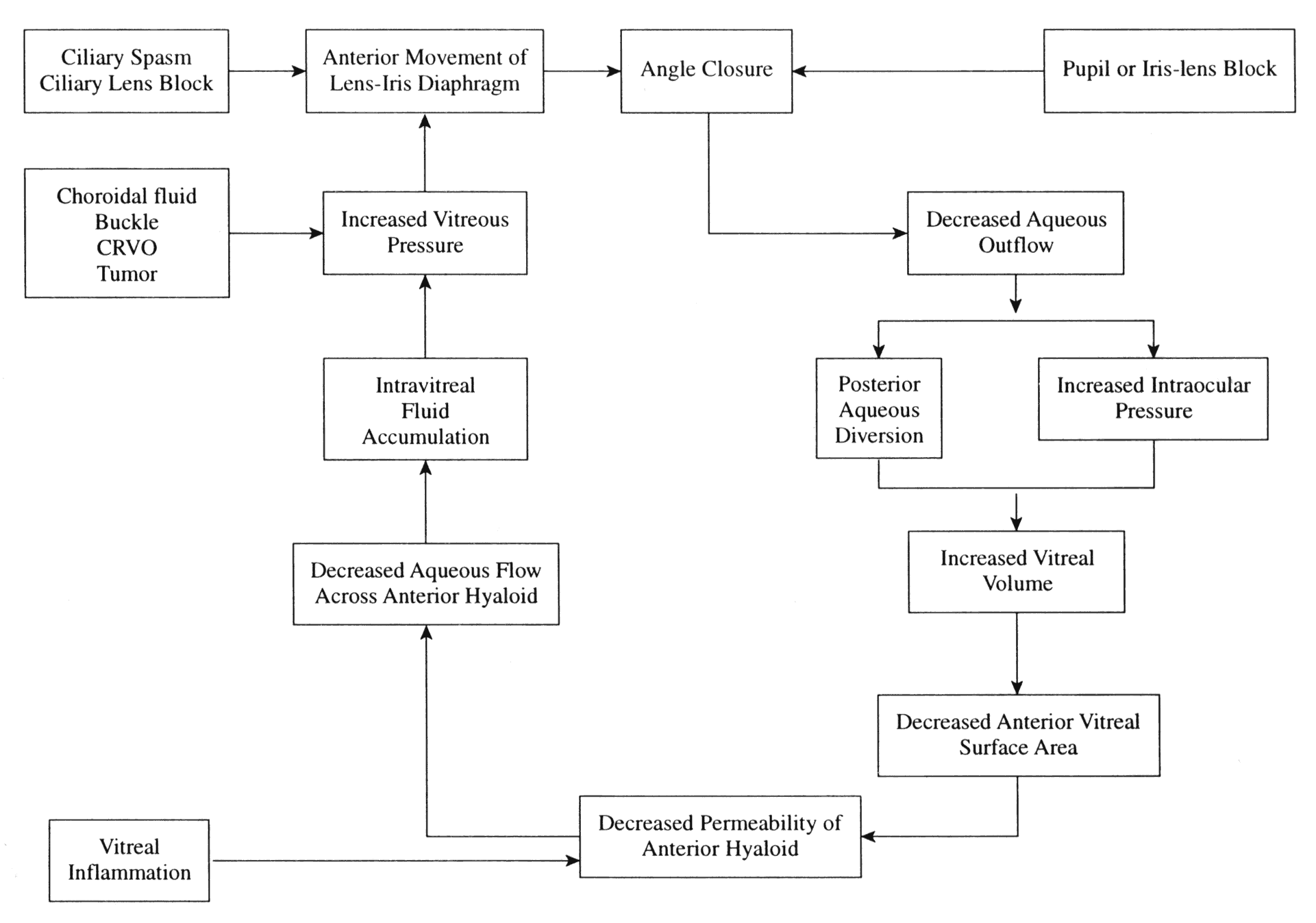

|
| Fig. 23. Suggested pathogenesis of malignant glaucoma, emphasizing the role of the vitreous in maintaining the disease process. The final common pathway of malignant glaucoma involves a self-perpetuating increased posterior pressure from expansion of the vitreous. Contributing factors include decreased permeability of the anterior hyaloid; decreased surface area available for flow throughout the vitreous; and posterior aqueous diversion. Treatment is aimed at short-circuiting the cycle of vitreous expansion and rising intraocular pressure. (Luntz MH, Rosenblatt M: Malignant glaucoma. Surv Ophthalmol 32:73, 1987) |